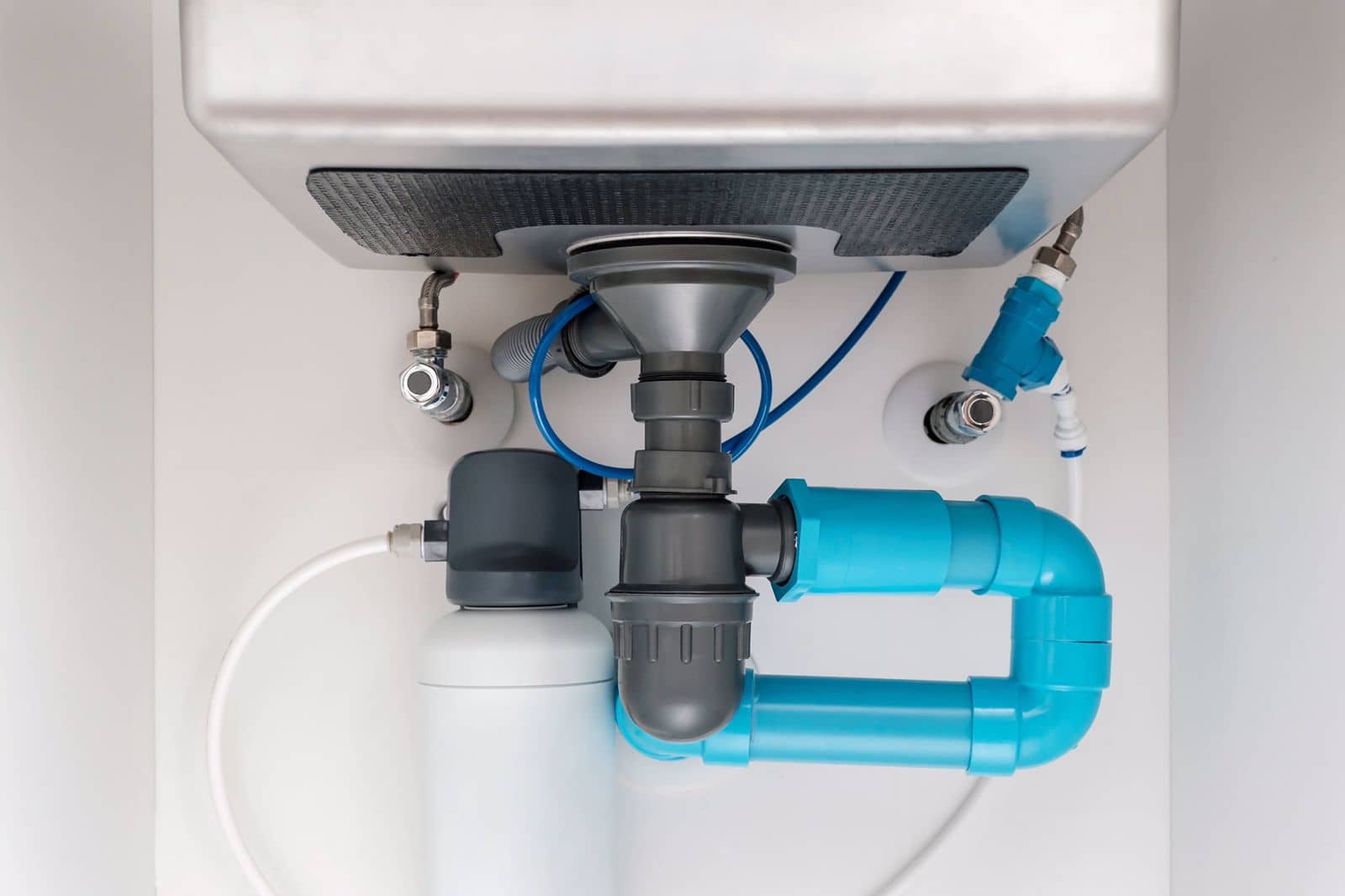Table of Contents
Everyone wants to have refreshing, pure, and most importantly, safe drinking water, but that’s often difficult to obtain. After all, it’s so easy for water to get polluted and contaminated. Thankfully, modern tech developments continue to innovate products to help make potable water more accessible through effective filtration. Among these, one particular innovation that’s taken the market by storm is an under the sink water filter.
An under-sink water filter is one of the many types of filters, except it’s attached underneath the sink, and it decontaminates the running water flowing through pipes, hence the name.
Although the product has several variants, such as mechanical or absorption filters, the under-sink filter type is among the most popular due to its affordability. However, take note that despite belonging to the same classification, each product works differently. If you plan on getting yourself one of these filters, you should think about it carefully.
Tips to choose under the sink water filter for your house
Here are some valuable tips to help you out when choosing an under the sink water filter.
Define your objective
When purchasing a filter, consumers have different objectives or intentions. Many homeowners look for one because they want water free of pollutants, while others simply want to improve its quality or taste.
If you’re the latter, getting an activated carbon filter might be the best choice, simply because this type specializes in eliminating unpleasant scents and tastes. However, if your goal is to purify water to become potable, filters that use an osmotic mechanism would do nicely, and for several reasons. One, they focus on eliminating or minimizing the volume of pollutants.
Its other variant, which uses reverse osmosis, has a multi-stage filtration system, which can prove to be quite useful for your objective. If you’re interested in this topic, you might want to check out https://www.filtap.com.au/under-sink-water-filters/5-stage-reverse-osmosis/.
Measure TDS levels
Total dissolved solids (TDS) pertain to the number of pollutants found in a specified volume of water. These may include metals, ions, and microbes.
Measuring the TDS levels helps one to figure out the problem with the water, which can help you narrow down your choices to specific types of filtration systems. A TDS meter is required to measure TDS levels. But if that’s not available, you can also get a test kit.
When using a kit, you’ll often see the TDS level measurements use the unit parts per million or ppm in short. Use the following range as your guide for this procedure:
- Low: <50-250 ppm, below-average amount of minerals
- Ideal: 300-500 ppm, regular level of total dissolved solids
- Not great: 600-900 ppm, above average, needs filtration
- Bad: 1000-2000 ppm, not fit for drinking
- Unacceptable: >2000, probably contaminated
Prioritize ease of installation and maintenance
Much like any other product, you must also look at how easy it is to install the water filter system. For your reference, a good product should be one that you can easily attach without using any special tool or equipment. It should also be easy to change the filters in the system as needed.
Check the price
As always, it’d also help if you check the product’s price first. Naturally, the lower the cost, the better, but make sure it’s not too cheap, as that might indicate substandard materials.
On that note, make sure you do your research on the brand or manufacturer before buying the product. If the company is legitimate, chances are you just stumbled upon an incredibly cheap filter. Of course, you need to check if it’s worth the price nonetheless. Also, don’t forget to check the price of its add-ons and replacement parts, since you’re bound to buy them later on to maintain the water filter.
Ensure usability and durability
While it’s possible to prolong the lifespan of the water filter with proper maintenance and repairs, doing repairs too often is an inconvenience. Therefore, it’s always a good idea to get a product that’s durable enough and not too high-maintenance. With that said, the ideal product should last for at least two years, while the filter component should be used for around one year.
Take note that this is just the average lifespan of water filters. If you’re filtering dirty or heavily contaminated water, it’s only natural for the filter to get used up rather quickly.
In a nutshell
Since there are numerous under-sink water filters on the market, a lot of deliberation is needed before you make your purchase. Consider factors such as features, durability, and price when choosing an item. You must also research the reviews of other customers as it’ll help you get useful insights on the product’s overall quality. It’s also worth considering getting a water softener if you think a water filter won’t be enough to do the job.




